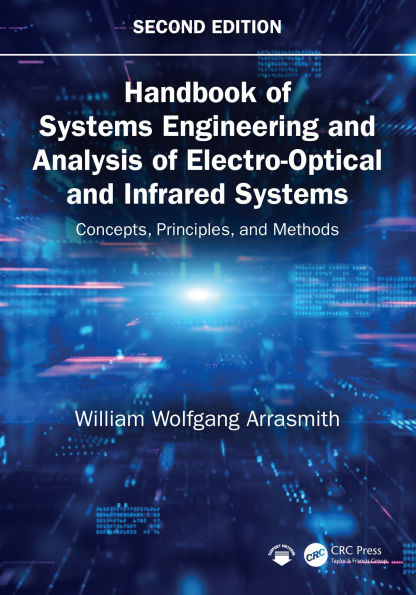There has been a lot of innovation in systems engineering and some fundamental advances in the fields of optics, imaging, lasers, and photonics that warrant attention. This volume focuses on concepts, principles, and methods of systems engineering‑related topics from government, industrial, and academic settings such as development and operations (DevOps), agile methods, and the concept of the “digital twin.”
Handbook of Systems Engineering and Analysis of Electro‑Optical and Infrared Systems: Concepts, Principles, and Methods offers more information on decision and risk analysis and statistical methods in systems engineering such as design of experiments (DOX) methods, hypothesis testing, analysis of variance, blocking, 2k factorial analysis, and regression analysis. It includes new material on systems architecture to properly guide the evolving system design and bridge the gap between the requirements generation and design efforts. The integration of recent high‑speed atmospheric turbulence research results in the optical technical examples and case studies to illustrate the new developments is also included. A presentation of new optical technical materials on adaptive optics (AO), atmospheric turbulence compensation (ATC), and laser systems along with more are also key updates that are emphasized in the second edition 2‑volume set.
Because this volume blends modern‑day systems engineering methods with detailed optical systems analysis and applies these methodologies to EO/IR systems, this new edition is an excellent text for professionals in STEM disciplines who work with optical or infrared systems. It’s also a great practical reference text for practicing engineers and a solid educational text for graduate‑level systems engineering, engineering, science, and technology students.
There has been a lot of innovation in systems engineering and some fundamental advances in the fields of optics, imaging, lasers, and photonics that warrant attention. This volume focuses on concepts, principles, and methods of systems engineering‑related topics from government, industrial, and academic settings such as development and operations (DevOps), agile methods, and the concept of the “digital twin.”
Handbook of Systems Engineering and Analysis of Electro‑Optical and Infrared Systems: Concepts, Principles, and Methods offers more information on decision and risk analysis and statistical methods in systems engineering such as design of experiments (DOX) methods, hypothesis testing, analysis of variance, blocking, 2k factorial analysis, and regression analysis. It includes new material on systems architecture to properly guide the evolving system design and bridge the gap between the requirements generation and design efforts. The integration of recent high‑speed atmospheric turbulence research results in the optical technical examples and case studies to illustrate the new developments is also included. A presentation of new optical technical materials on adaptive optics (AO), atmospheric turbulence compensation (ATC), and laser systems along with more are also key updates that are emphasized in the second edition 2‑volume set.
Because this volume blends modern‑day systems engineering methods with detailed optical systems analysis and applies these methodologies to EO/IR systems, this new edition is an excellent text for professionals in STEM disciplines who work with optical or infrared systems. It’s also a great practical reference text for practicing engineers and a solid educational text for graduate‑level systems engineering, engineering, science, and technology students.

Handbook of Systems Engineering and Analysis of Electro-Optical and Infrared Systems: Concepts, Principles, and Methods
738
Handbook of Systems Engineering and Analysis of Electro-Optical and Infrared Systems: Concepts, Principles, and Methods
738Related collections and offers

Product Details
| ISBN-13: | 9781040357293 |
|---|---|
| Publisher: | CRC Press |
| Publication date: | 06/30/2025 |
| Sold by: | Barnes & Noble |
| Format: | eBook |
| Pages: | 738 |
| File size: | 43 MB |
| Note: | This product may take a few minutes to download. |
